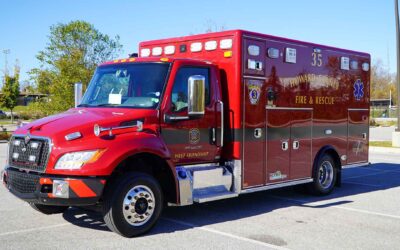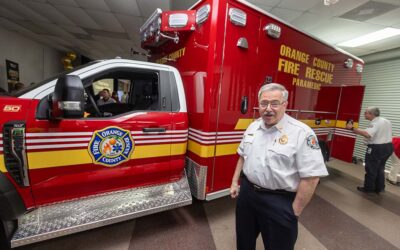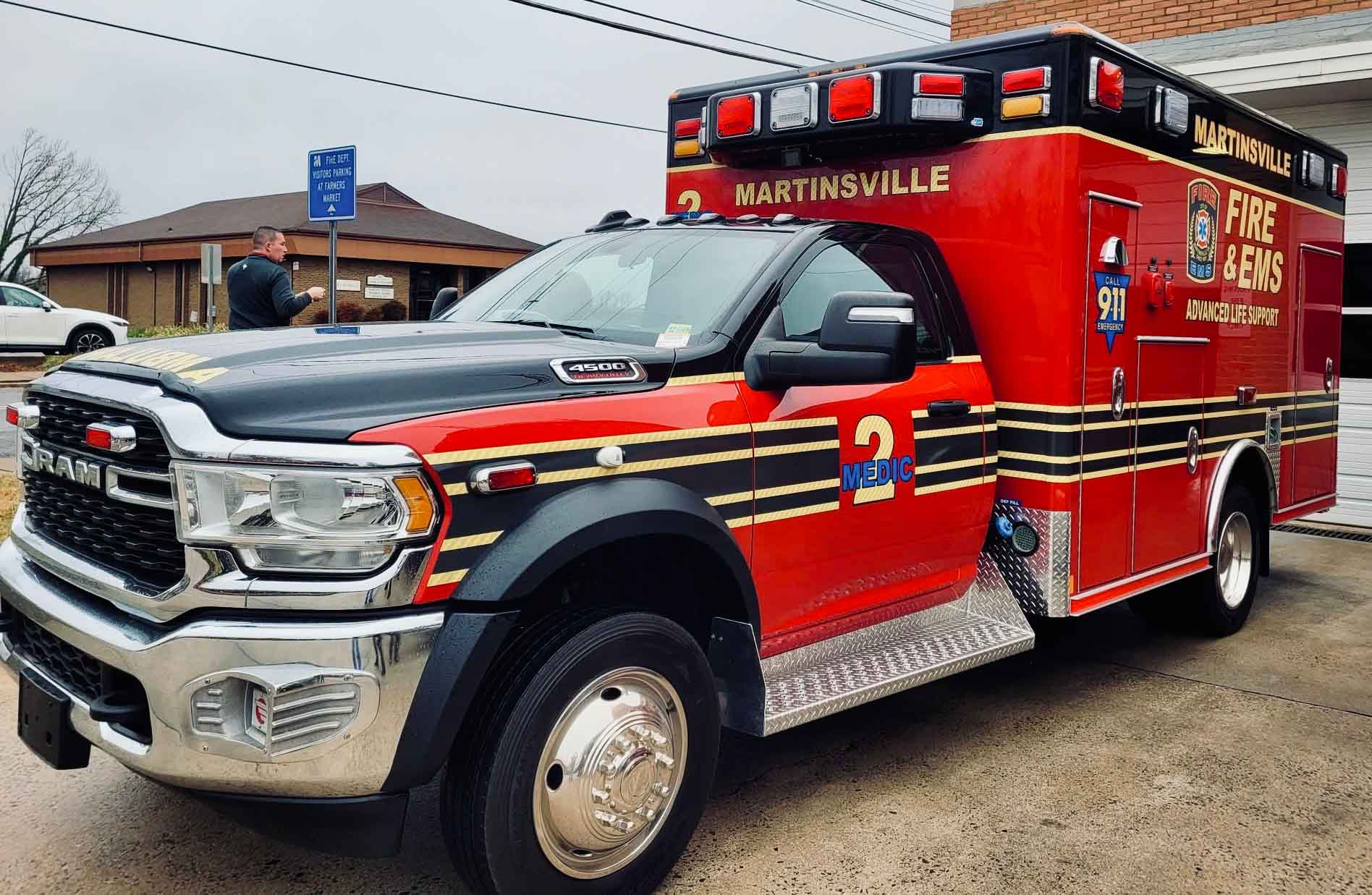
Wheeled Coach built this Type 1 ambulance on a Dodge 4500 4×4 cab and chassis for Martinsville (VA) Fire & EMS. (Photos courtesy of Martinsville Fire & EMS.)
By Alan M. Petrillo
Martinsville (VA) Fire & EMS is a combination agency providing fire suppression, vehicle and technical rescue and advanced life support (ALS) EMS transport services for an 11-square mile area with 24 full-time firefighter/paramedics, and as well as volunteer EMS transport crews responding from two stations. Martinsville responds to approximately 3,800 calls a year, 85% of which are medically related.
The department wanted to replace a 2011 Type 2 International Terra Star rig that had to be relegated to reserve status and chose to go with a Wheeled Coach Type 1 ALS ambulance, similar to the other first-line Type 1 Wheeled Coach the department was running.
“We have a short transport time in our district so we wear out our ambulances fast,” says Diana Foley, assistant chief of EMS for Martinsville. “The average time for a run from the station to the scene and then the hospital is a 30 minute turnaround time. So, the rigs get a lot of use and time on the road.”
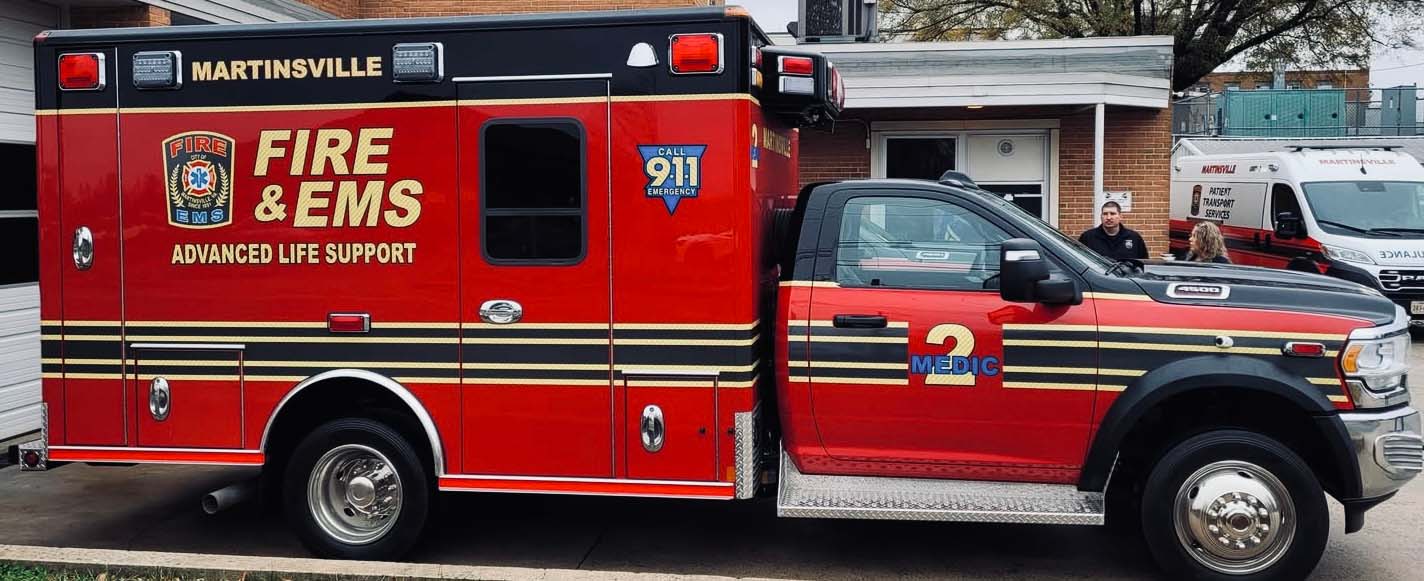
The Martinsville Type 1 is powered by a 6.7-liter diesel engine and has a Liquid Spring rear suspension.
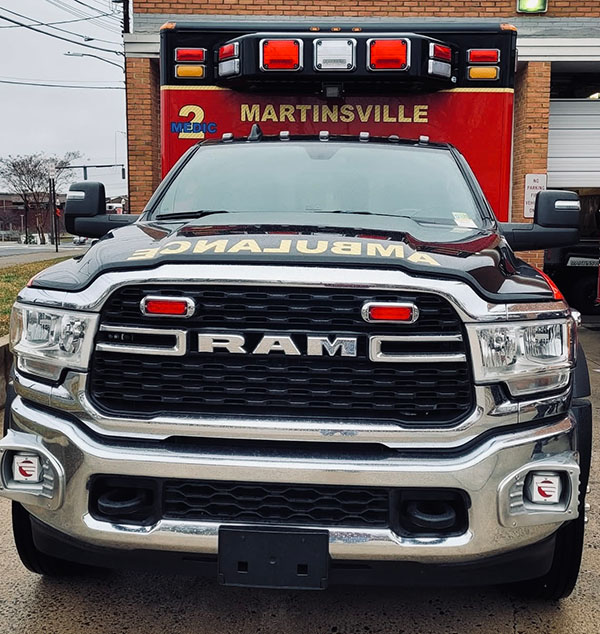
The new rig has a CoolBar 60,000-BTU auxiliary condensing system.
Foley says Martinsville was running a Wheeled Coach Type 1 ambulance and a Dodge RAM Type 2 rig as first line before getting their new Wheeled Coach Type 1. The International Terra Star was replaced and the Dodge RAM Type 2 was moved to serve as a transport unit along with a Type 2 Ford Sprinter rig.
Brandon Vaughan, sales representative for Atlantic Emergency Solutions, says Wheeled Coach built a Type 1 ambulance for Martinsville on a Dodge 4500 4×4 cab and chassis with a 153-inch long body that’s 95-inches wide with 72-inches of headroom. The rig has a 4-inch drop skirt body on both sides and is powered by 6.7-liter diesel engine and has a Liquid Spring rear suspension. Wheelbase on the Type 1 is 169 inches and overall length is 24-feet, 6-inches, with a 16,500-pound gross vehicle weight rating (GVWR).
Foley points out that Martinsville wanted a couple of extra features on their new Wheeled Coach rig that their previous ambulance didn’t have. “We wanted to add the Cool-Bar as an auxiliary condensing system, as well as make some compartmentation changes,” she says.”
Greg DeForge, Wheeled Coach’s sales manager, points out that the 60,000-British thermal unit (BTU) capacity Cool-Bar has 800-square inches of condensing coils versus 560-square inches of coils used in typical external condensers, and has four high capacity fans versus the typical two fans in other external condensers.
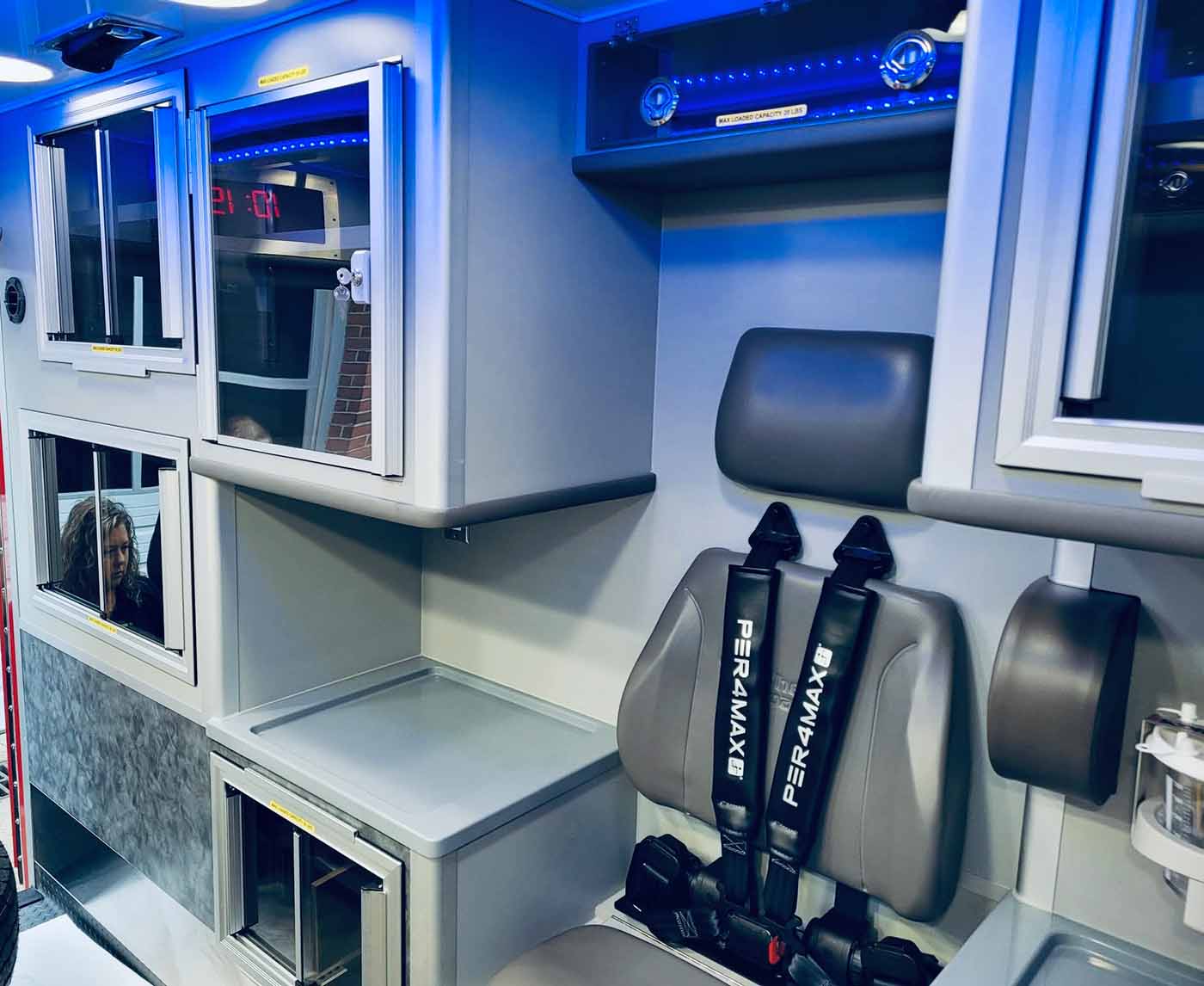
All seating positions in the Wheeled Coach Type 1 are protected by Per4Max harnesses.
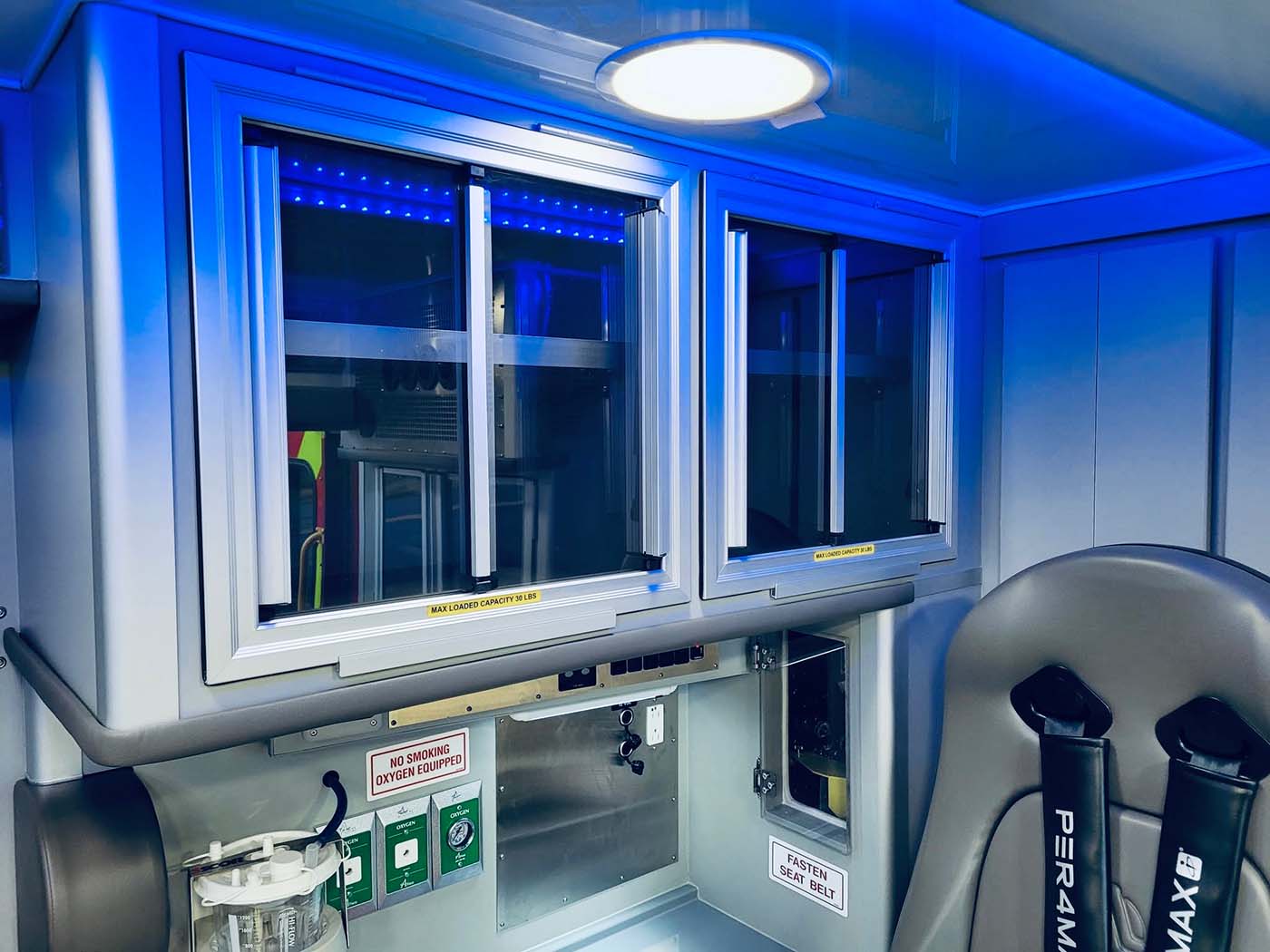
All cabinets on the interior of the rig have a restocking feature that allows fast, easy replacement of materials and equipment.
Foley notes that Martinsville wanted the right rearmost exterior compartment to be available for firefighting turnout gear, which meant moving the stair chair, typically located in that compartment, to the L1 compartment at the left front of the rig with the oxygen bottle.
Vaughan adds that the Martinsville rig carries a small L2 compartment above the L1 O2 compartment that holds the rig’s suction pump and Vanner inverter. He says the Martinsville Type 1 also has a severe weather insulation package, a restocking feature on all interior cabinets, an interior digital clock over the rear doors, Per4Max seat harnesses on all seating positions, and a Stryker PowerLOAD and PowerCOT.
The exterior of the rig features Safety Vision side view and rear view cameras, and full chevrons on the curbside and rear entry doors, while lighting includes Whelen 100 series LED warning and scene lighting, an additional pair of Whelen front and rear amber arrows high on the box, and LED strip lighting in the compartments.
ALAN M. PETRILLO is a Tucson, Arizona-based journalist, the author of three novels and five nonfiction books, and a member of the Fire Apparatus & Emergency Equipment Editorial Advisory Board. He served 22 years with the Verdoy (NY) Fire Department, including in the position of chief.

